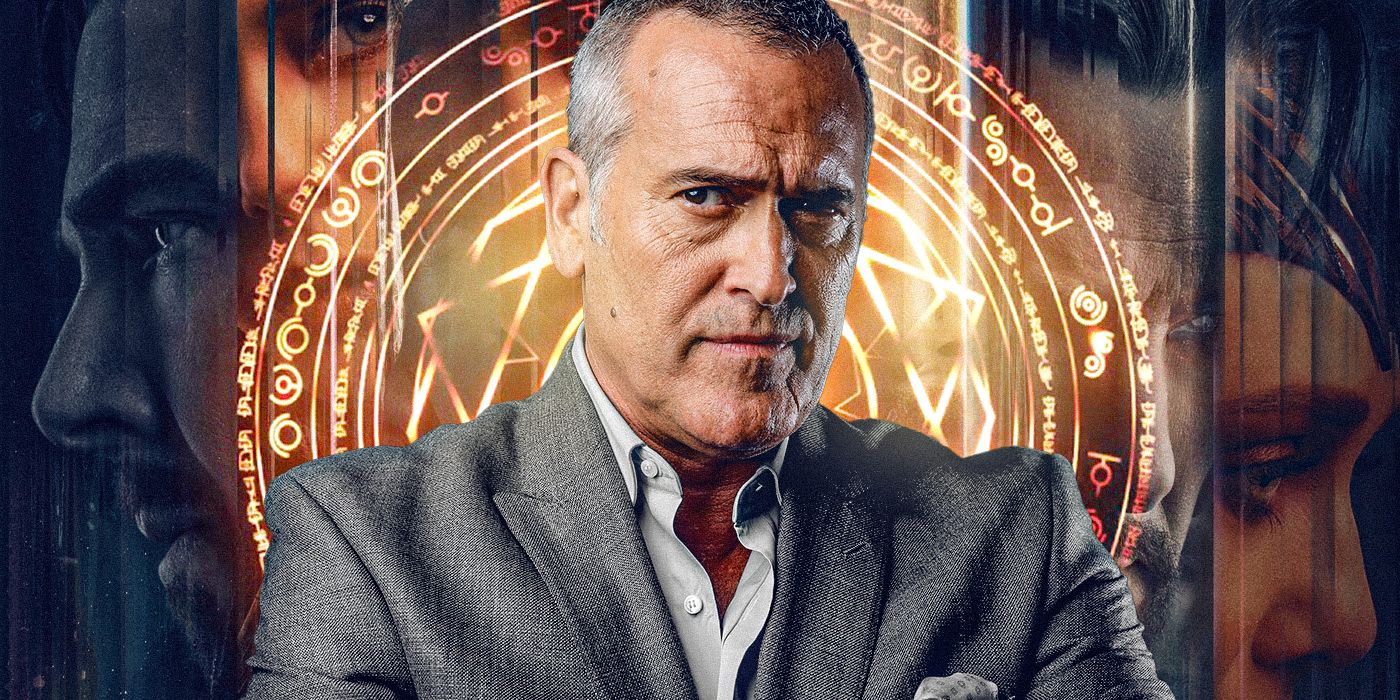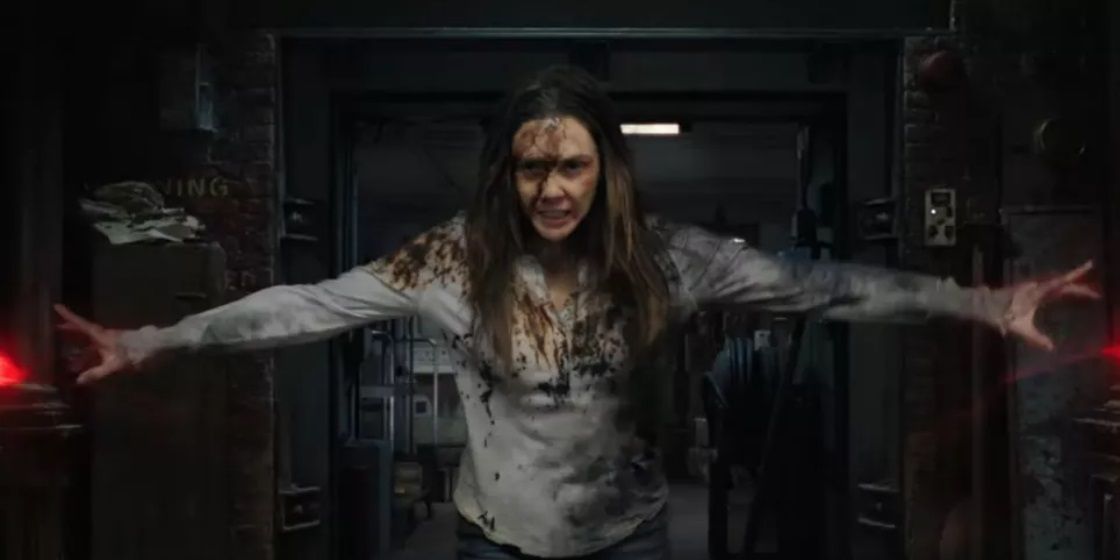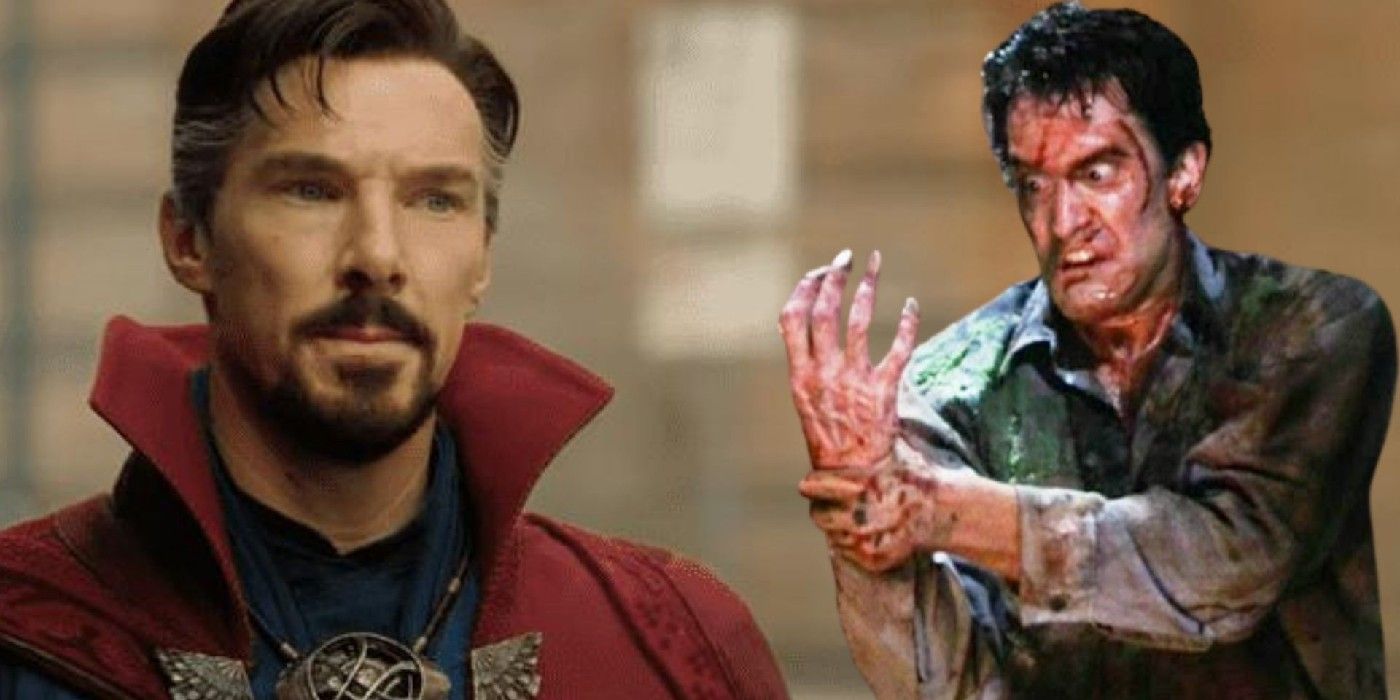Sam Raimi brought his classic stylistic choices and signatures to the Marvel Cinematic Universe’s latest offering, Doctor Strange in the Multiverse of Madness. As expected with Raimi’s movies, Bruce Campbell made a cameo as a street food vendor, referred to as Pizza Poppa. Pizza Poppa picks a fight with Doctor Strange, who, in turn, curses him to uncontrollably slap himself… for three weeks. The gag comes full circle in the post-credits scene, when Pizza Poppa is finally able to stop hitting himself, breaks the fourth wall and proudly proclaims to the audience, “It’s over!” before it cuts to black. Many fans were disappointed that the post-credits scene was goofy, but it actually fulfills a specific cathartic device employed in tragic theater to break audiences out of the narrative by giving them a good laugh.
Doctor Strange 2’s Post-Credits Fulfills Genre Requirements
Multiverse of Madness is the MCU’s first serious engagement with the horror genre aside from the What If…? zombie episode. Gory and violent death scenes, jump scares and even a zombified Doctor Strange give Multiverse of Madness all the trappings of a horror film. Giving Multiverse of Madness the horror treatment works so well not just because of the two main characters’ magical powers but also because it deals directly with the themes of loss and grief through the Scarlet Witch/Wanda Maximoff’s character. The movie gets dark with how far Wanda is willing to go to fulfill her greatest wish: to be reunited with her twin sons Billy and Tommy in a universe where they can all be together. And much like the horror genre, the tragedy shares similar themes of loss, desperation and the inability to cope with grief.
In their poetry competitions, the ancient Greeks laid down the formula for effective tragic theater. A cycle of three tragic plays were paired with a raunchy, ridiculous satyr that provided a necessary counterbalance to witnessing the emotional suffering of characters’ prideful attempts to circumvent fate — another theme that Wanda shares with many tragic heroines like Medea and Antigone. The Elizabethan playwrights (and the contemporary Shakespeare’s Globe) continued this tradition. After every theatrical performance, the entire cast performed a jig in costume to signify the end. The goofy Campbell post-credits scene of Multiverse of Madness follows in this long theatrical tradition of ending a serious, tragic performance with a comedic gag — one that references Campbell’s most famous Raimi role to boot — to release the tension.
Why Doctor Strange 2’s Post-Credits Worked So Well
When Campbell’s Pizza Poppa appears in that post-credits scene to break the fourth wall and say in no uncertain words that his curse and the performance are both over, it breaks the audience out of the dramatic narrative tension that was building over the two-hour film. Though fans stick around for the post-credits scenes to see what the MCU will do next, the campiness of the fourth wall break is doing exactly what it needs to do: signify the end of the performance and tell the audience to enter the real world again. Raimi cleverly uses his signature of putting Campbell in all of his films and referencing The Evil Dead to bring comedic relief to a movie that delved into dark, morally dubious territory in its two hours of traffic on the screen.
While the MCU typically uses post-credits scenes to tease future movies and characters, a shift toward using them as a form of catharsis might actually help bring closure. Very valid criticisms of the MCU often come back to the notion that they aren’t self-contained and require far too much background knowledge of the franchise for newcomers. One way to move toward keeping them self-contained is to phase out the post-credits scene that hints at future projects and make it a funny gag referencing the events of the film, like Raimi does in Multiverse of Madness. Regardless of what one thinks of the post-credits scene, it’s a goofy gag with a long theatrical history behind it that allows Raimi to make this MCU movie his own.
Catch Bruce Campbell’s cameo in Doctor Strange in the Multiverse of Madness, now streaming on Disney+.



